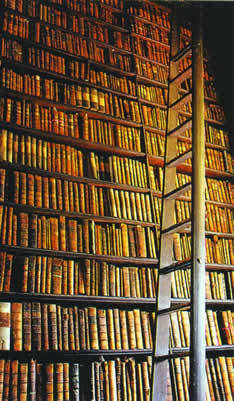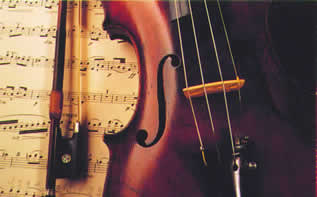Father Martini and Bologna
by Maria Chiara Mazzi
Important master of the past and model for musicians of the future.
When looking into the music history of the city of Bologna from the
sixteenth century on, we notice that the great baroque period, between the
second half of the seventeenth and the beginning of the eighteenth century, is
probably its most splendid moment. It is in that time that great institutions
were founded and which are still so much alive, like the Philharmonic Academy, a
time in which the magnificent apparatus of baroque religiosity finds its finest
expression in the basilicas of the second city of the papal state.
Then the city, in the second half of the century, seemed to almost
withdraw into itself. But, in this sort of aurea mediocritas (golden mean) a
shining light allows Bologna to be a magnet for all of musical Europe. This
shining light is called Giovanni Battista Martini, born in 1704 and, after
having practically always lived from 1729 in the San Francesco convent (which
has become for this reason a destination for men of culture from everywhere),
died in 1784.
Father Martini, certainly, was a composer: he wrote, other than
a lot of sacred music, instrumental pieces and even melodramas with a comic
edge, the first with a severe style and in counterpoint, the second in perfect
gallant style according to the taste of the time. Father Martini lived from his
small convent room nearly three periods of history. He was a distinguished
professor and, in the years he lived, he was able to share his knowledge with
the last baroque composers, like Jommelli, those of gallant style, like
Christian Bach and Sarti, and the first neoclassical composers, like
Cherubini.
But, above anything else, he was quite an erudite of encyclopedic
knowledge who put all of his learning in a fundamental treatise of counterpoint
in two volumes (from 1774-75) and the antique music history in three volumes
(1757-70-81). In correspondence with the most important European composers,
performers and theoreticians, he was constantly asked for advice (and sometimes
for recommendations) from artists in all Europe who wanted to be introduced by
someone important who opened all doors. Not only that: all famous travellers,
musicians or not, who came by Bologna (and who often had Bologna as a stopping
place for that reason) visited him. Among them, Mozart, when he was 14 years
old, stopped in the city to pass the exam of the philharmonic academy, in which
he was helped by the reverend father, probably because he was not too
experienced with antique severe counterpoint.
The Bologna of today has not
forgotten the heritage of this extraordinary Franciscan brother: the library of
the Civico Museo Bibliografico Musicale retains the voluminous
correspondence of the famous brother, a correspondence through which it is possible to
reconstruct the European musical life and the personal intrigues among the
various artists during the second part of the eighteenth century. The library
also retains alive and available to researchers, who today still come from all
over the world to the city, the very precious collection of thousands of books
(some quite old and therefore very valuable) that Father Martini put together
also thanks to European travelling friends.
of the famous brother, a correspondence through which it is possible to
reconstruct the European musical life and the personal intrigues among the
various artists during the second part of the eighteenth century. The library
also retains alive and available to researchers, who today still come from all
over the world to the city, the very precious collection of thousands of books
(some quite old and therefore very valuable) that Father Martini put together
also thanks to European travelling friends.
The library still
holds his paintings: at the time in Bologna, an unequalled collection, still so
valuable today, of effigies of musicians who otherwise would be unknown to us,
and that Brother Martini had gathered by asking directly the interested parties
or by ordering explicitly from painters portraits that were then drawn from
engravings of the time.
Finally and above all, Bologna has given the name of
Father Martini to the Conservatory, a concrete and durable tribute to one of the
most important masters of the past and a model for musicians of today and the
future.